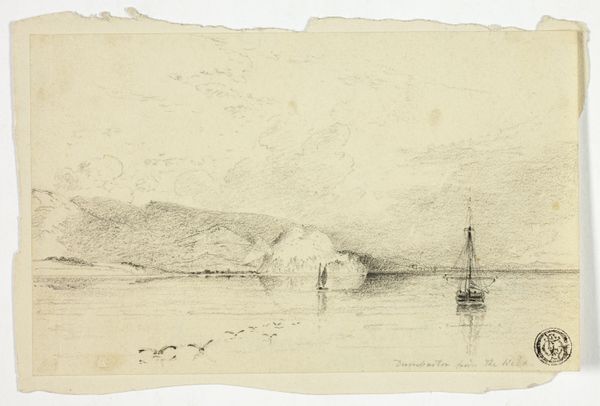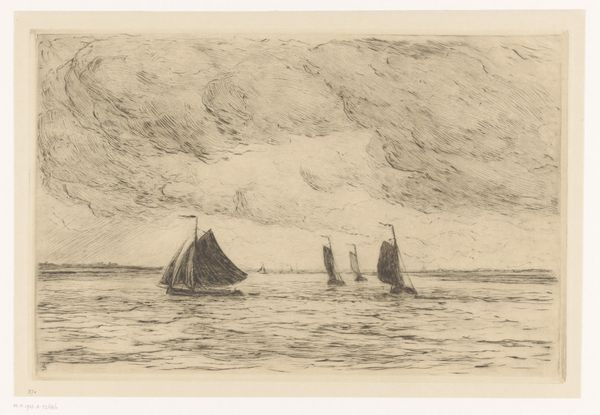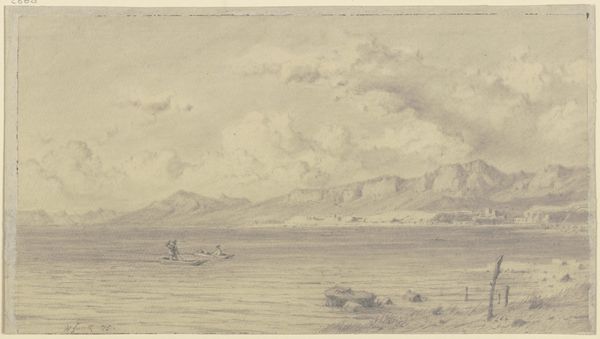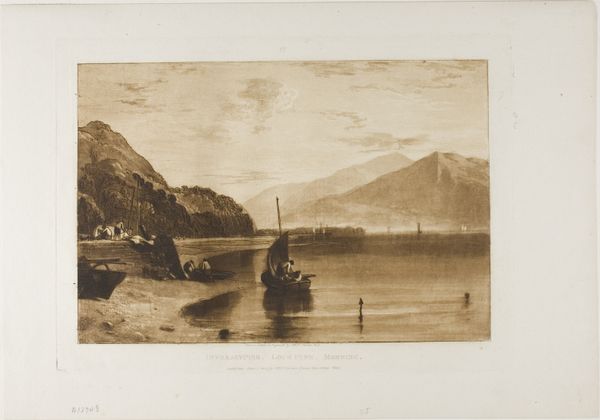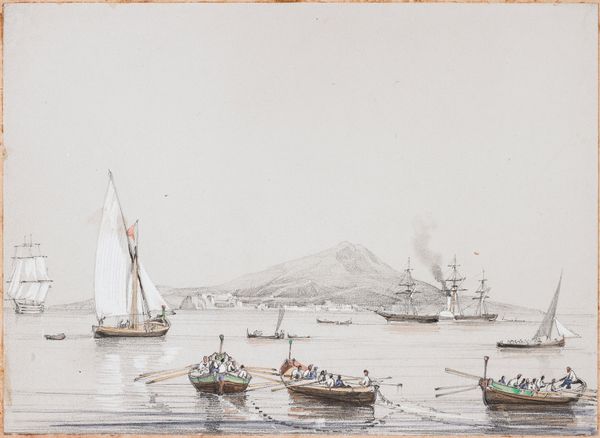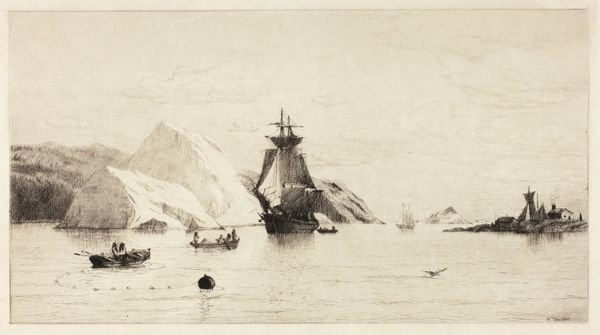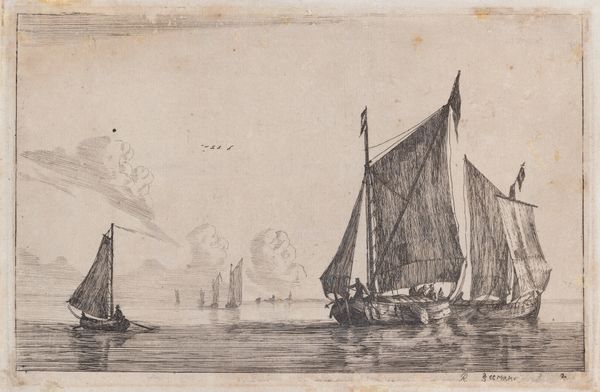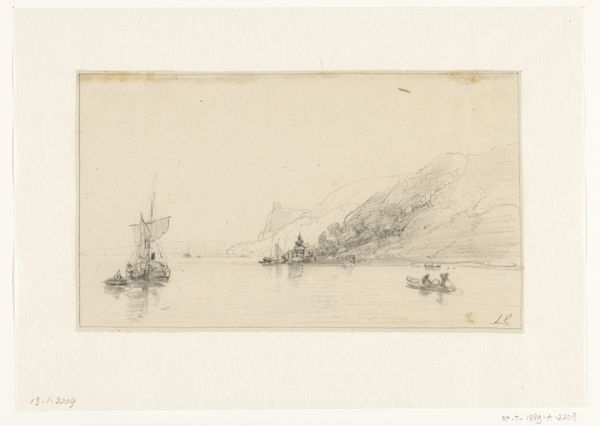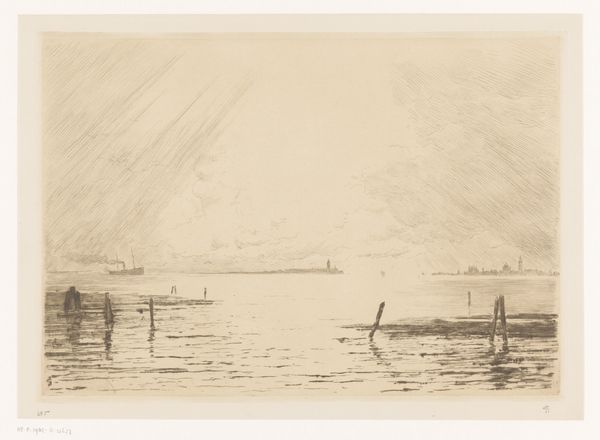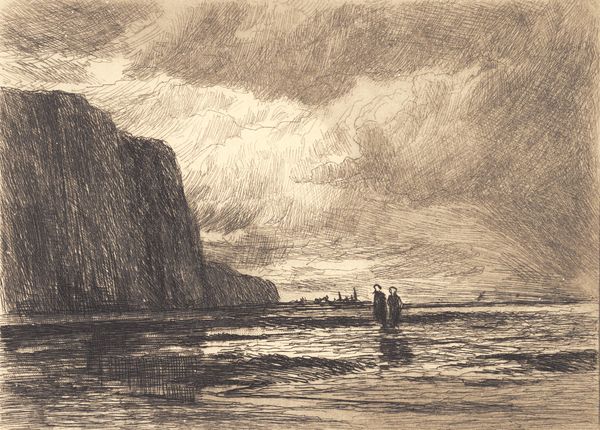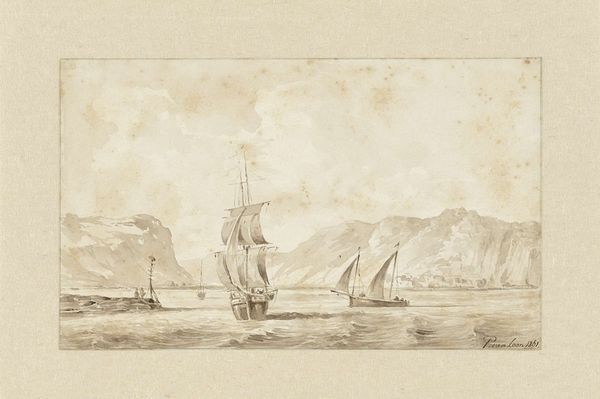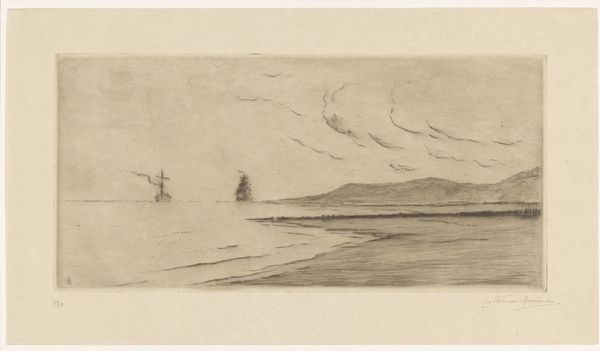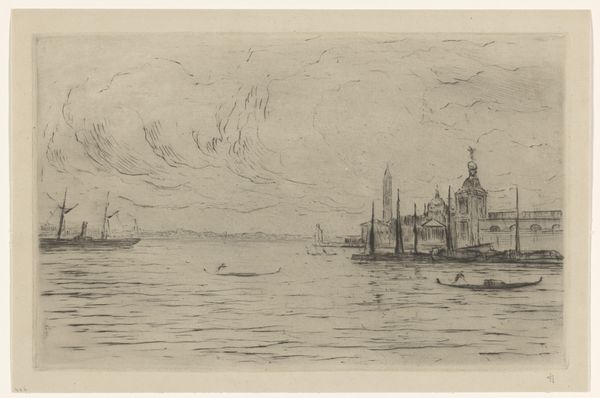
drawing, paper, pencil
#
drawing
#
landscape
#
paper
#
romanticism
#
pencil
#
line
#
realism
Copyright: Public Domain
Curator: This subdued pencil drawing immediately conveys a sense of quietude, almost melancholic. There's a hazy atmosphere; the forms of the boats and the distant island are soft, blurred as if viewed through mist. Editor: Indeed. What we are viewing is Frederik Thöming's "View of Capri from the sea," rendered in 1844 with pencil on paper. The very choice of a humble material like pencil underscores a moment in history ripe with cultural shifts and identity questions. Curator: Ah, precisely. The date situates this work in a period of expanding colonialism and Romanticism's fascination with both the sublime and the "authentic." Capri itself becomes a site layered with meaning. Who is Thöming, a Northern European artist, to be representing this Southern Italian landscape? What are the power dynamics at play? Editor: I'm more interested in the tonal range that he achieves here with simple pencil strokes. Notice how he builds depth, especially in rendering the island’s rock face, through subtly shifting densities of shading, echoing atmospheric perspective, drawing the eye naturally across the waters. Curator: The two boats bookending the composition are not simply aesthetic elements; they represent conduits between worlds. Consider the implications of maritime trade, the exploitation of resources, and the narratives of those who travel or are displaced across these very waters. It invites discussions about mobility and economic disparities tied to 19th-century expansionism. Editor: While these considerations provide compelling historical context, to limit our understanding purely to socio-political dimensions risks overlooking the meticulous execution. Focus, instead, on his skillful arrangement of horizontal lines for water and nuanced curvatures which yield an undulating ocean surface; this is all structured line work! Curator: However, if we ignore the sociopolitical implications, we turn a blind eye to the way these serene landscapes served to validate imperial power and the subjugation of people connected to those places. Editor: In the end, what this teaches us is how art pieces work at multiple levels and how valuable varied critical standpoints are in allowing a fuller grasp of them. Curator: A perspective shift that truly broadens the canvas.
Comments
No comments
Be the first to comment and join the conversation on the ultimate creative platform.
